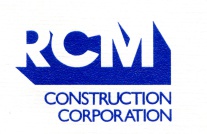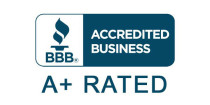Aluminum Railing Post Bases
A common contributor to spalling concrete on concrete corridor and lanai edges occurs at the base of aluminum railing posts. One simply has to walk around a building and observe that a majority of the concrete edge spalling often orginates around the base of the railing posts.
In the ‘not so old days’, the typical material used in Hawaii to grout around the base of aluminum railing post assemblies was a material referred to as Por-rok that for many years was gypsum based. To this day, it is probable that the majority of aluminum railing posts of Hawaii’s buildings remain ‘anchored’ by this product.
While effective in interior applications, the anchoring grout is less effective in exterior applications subject to rain. The ‘cap’ of cement that was often specified to be applied atop the material was most often ineffective and ignored the problem of water accumulation within the railing post.
This water soluble anchoring material is not unlike Plaster of Paris. It turns to mush when soaked with water. The problem develops with water migration through the seams of the extruded, snap-together aluminum post assemblies. Surprising to many, aluminum corridor and lanai railing posts are not seamless. They are comprised of multiple extruded components that ‘snap’ together to form the completed post.
So what happens? Everyone realizes that we in Hawaii live in a salt laden environment due to our ocean surrounds. Winds pick up ocean spray that results in our rain water being slightly saline. The wind carried salt water seeps through the seams or joints of the aluminum railing posts and flows down to the anchoring grout. It then migrates to the perimeter reinforcing steel along the slab edges and promotes rusting and subsequent spalling or delamination of the slab edge concrete.
Separate from any spall repairs that may be required, a remedial solution to mitigate the accumulation of water within the bottom of the post is to drill a hole near the bsae and fill the post bottom with a purable, self-leveling 100% solids sealant. The drilled hole in the railing post through which the sealant is placed then provides an escape for the accumulated water within the post.
We have performed multiple ‘drill and fill’ projects to mitigate this problem. We recommend the ‘drill and fill’ approach even if as of yet there is no obvious spalling. If not performed, then expensive concrete spall repair will most likely occur sooner than not.



